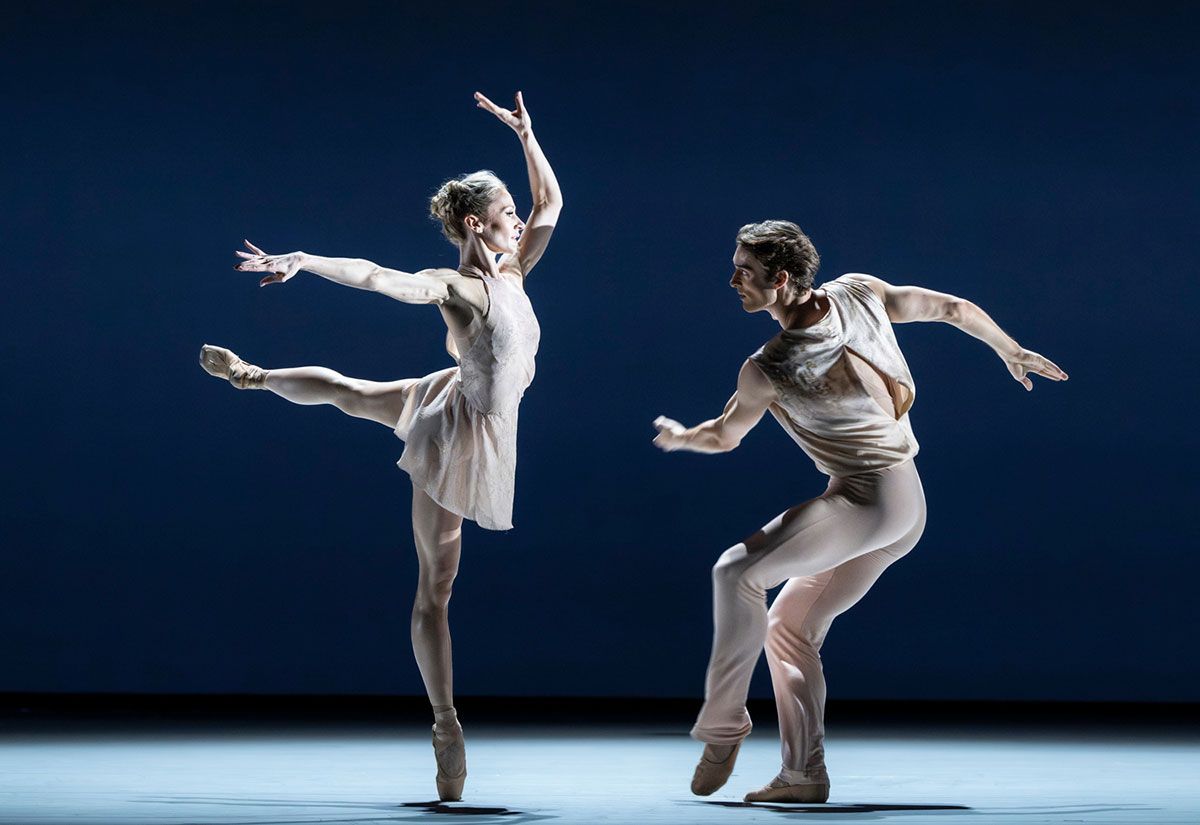Royal Ballet, Encounters: Four contemporary ballets
A Royal Ballet night of new and recent works from Kyle Abraham, Pam Tanowitz, Joseph Toonga and Crystal Pite…
 Melissa Hamilton and Lukas B. Brændsrød in Kyle Abraham’s ‘The Weathering’. © @FoteiniPhoto
Melissa Hamilton and Lukas B. Brændsrød in Kyle Abraham’s ‘The Weathering’. © @FoteiniPhoto
Royal Ballet
Encounters - Four contemporary ballets: The Weathering, Or Forevermore, Dusk, The Statement
★★★✰✰
[Kyle Abraham ★★★★✰, Pam Tanowitz ★✰✰✰✰, Joseph Toonga ★★★✰✰, Crystal Pite ★★★★★]
London, Royal Opera House
22 October 2024
www.rbo.org.uk
So much of ballet is a celebration of the past - old works and old themes almost constantly recycled, and as an art, sometimes the here and now can seem forgotten. So we all perk up when a company puts on an all-contemporary bill, and we get a strong whiff of the new. It doesn’t mean we are going to like it all, but boy, do we perk up! Encounters, the latest Royal Ballet (RB) quad bill, premiered last night, rightly hedges its bets by coupling two recent contemporary successes to two new works by returning contemporary choreographers - so, with everybody artistically knowing everybody, it should all be just hunky-dory, shouldn’t it? Oh, if it was that simple - but you know that, don’t you!
Kyle Abraham’s The Weathering opened the night, making a welcome return following its RB premiere 2½ years ago. “A gentle meditation on love, loss and memory…” goes the blurbs, and gentle it certainly is and very much the unscary end of what contemporary ballet can be. For eleven dancers, it’s a piece that appeals to me because it picks up on the lightness and ethereal nature of ballet, which is pretty unusual in new work these days. At the start, life is good, and all the steps feel light and breezy, with the arms often floating in natural elation. After a pacey solo for the fleeting and buoyant Sae Maeda, Weathering gradually morphs into much slower and more emotional movement and a gorgeous duet for Melissa Hamilton and Lukas B. Brændsrød. None of this is about jarring new steps or strange eye-catching choreography but about showing a profoundly moving relationship in a smooth and beautifully crafted mix of ballet steps put through Abraham’s contemporary dance lens. And all finely underpinned by Ryan Lott’s tender and atmospheric score. It’s a piece that fits well with RB’s dramatic nous and a good call to put it back on stage.
The second piece and first premiere of the night could tonally not be more different, and I found it intensely annoying. Pam Tanowitz’s Or Forevermore is an expanded version of her well-received Dispatch Duet (from November 2022) and danced again here by Anna Rose O’Sullivan and William Bracewell. Sadly, the original duet is ruined by the new setting and the addition of 12 dancers. Tanowitz deconstructs ballet every which way and comes over as a recalcitrant 8-year-old, who, in response to anything, asks, “Why?”. After about the hundredth “Why?” you get pretty sick of it, and it turns out to be the same with distorted ballet steps. It doesn’t help that, despite an interview in the programme, she doesn’t actually say what the work is about or its clear inspiration - nothing, only that it’s hard work extending a duet. The additions seem to be about tearing apart an unspecified 19th-century classical work and the inner feelings of some of the courtly participants - but who knows? I can occasionally admire the precision of what Tanowitz asks from her dancers, but her much-mentioned wit rapidly wears thin and, come the duet, I was long out of goodwill for the movement and the challenging scratchy score of Ted Hearne. It’s such a shame because O’Sullivan and Bracewell were in fine form in executing such pared-back and highly technical material.
The second premiere, Dusk, was by Joseph Toonga, and, like Kyle Abraham, he seemed to embrace ballet movement perhaps more than his hip-hop and contemporary dance background might suggest. And again, like the Abraham, this is an emotional work, but whereas Abraham’s movement picks up on ballet lightness, Toonga is more about a beefy physicality built around the torso. For seven dancers, its 20 minutes go by all too quickly, if I’m not sure I saw so much of its inspiration in the steps - reflections on how he got to where he is in life. But the group work here really stuck in the mind for it’s sassy attitude and sense of community.
The very best came last: Crystal Pite’s The Statement. Pite is currently in a league of her own, and this work shows the span of what she can tackle - it’s so different from the other Pite works in RB’s repertoire. The Statement picks up on Pite’s theatrical side (with long-term collaborator Jonathan Young) and uses dancers in extravagant animation of spoken words. Under the microscope is a huge and unknown organisation that has F**ked up royally and is trying to figure a way out. It pits two pairs of dancers against each other, one pair at the heart of the problem and the other sent down from on high to sort out the crap and agree on a statement. It’s the dance-drama of human nature as things descend into them all trying to set each other up as the fall guy. Over its 20 minutes, the pressure builds, the words become ever more incoherent, and the movement goes from clarity to instinctual, foetal and dominating. Fabulous acting from Ashley Dean, Joseph Sissens, Kristen McNally and Calvin Richardson. It’s a stunning work; you feel you’ve seen something very contemporary and far removed from the usual dance tropes.